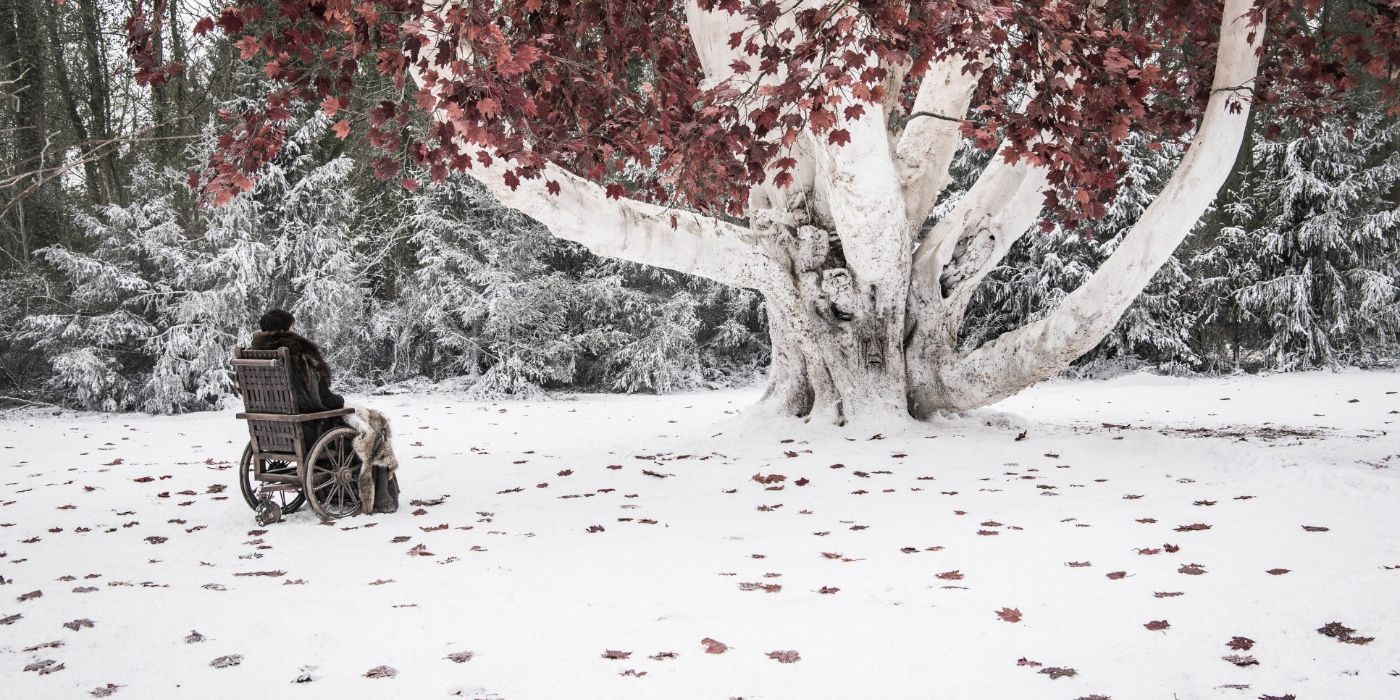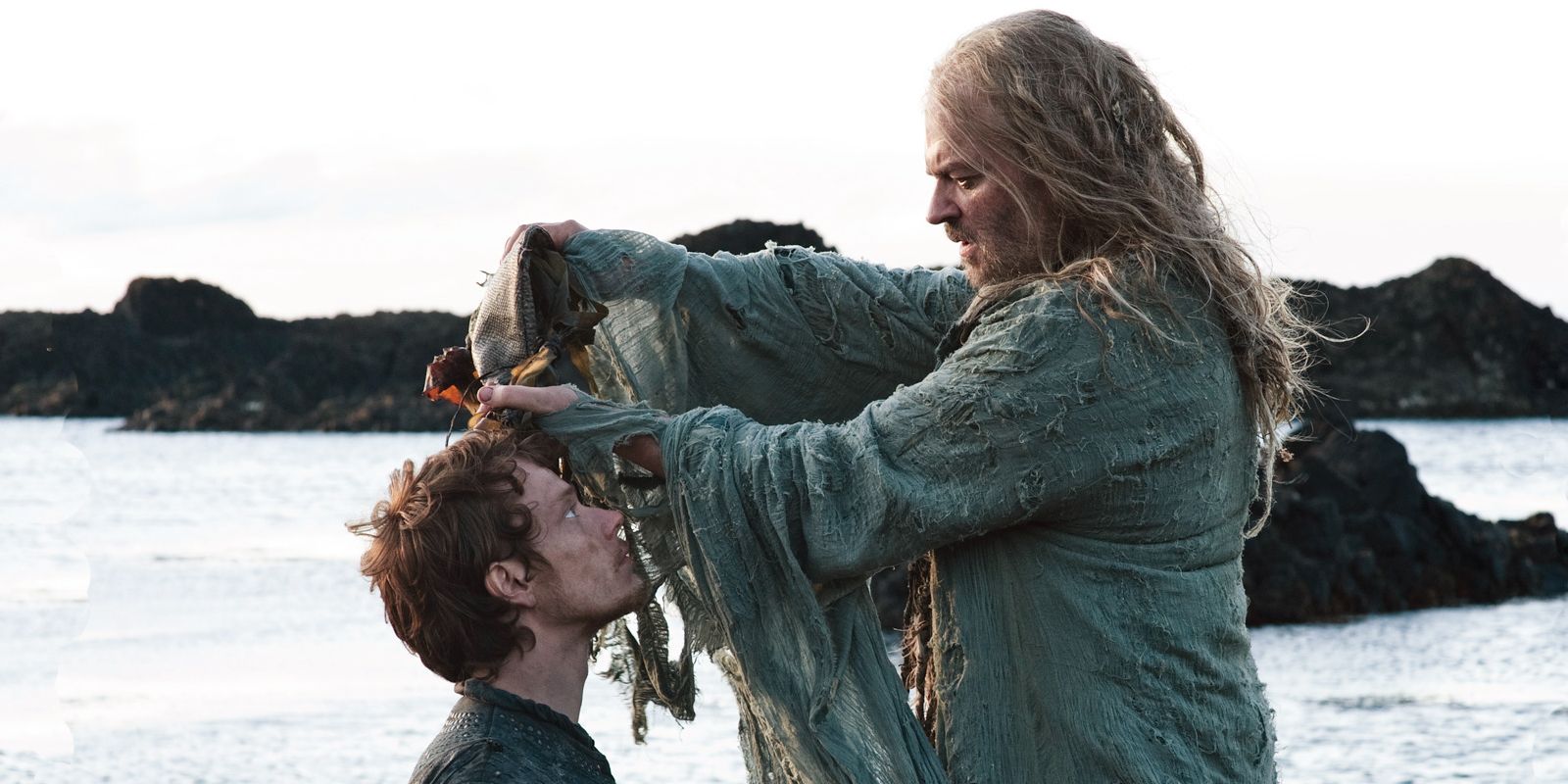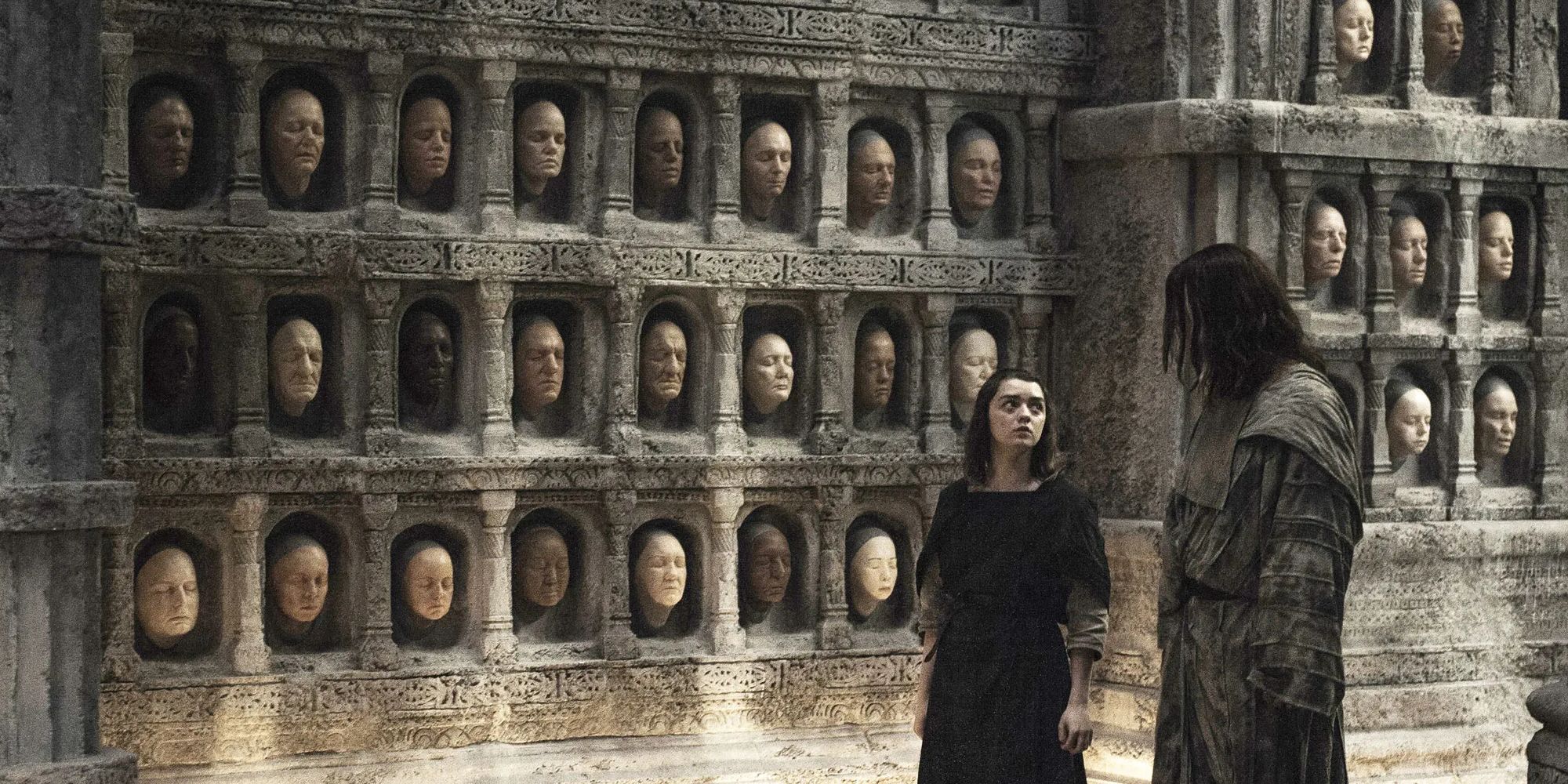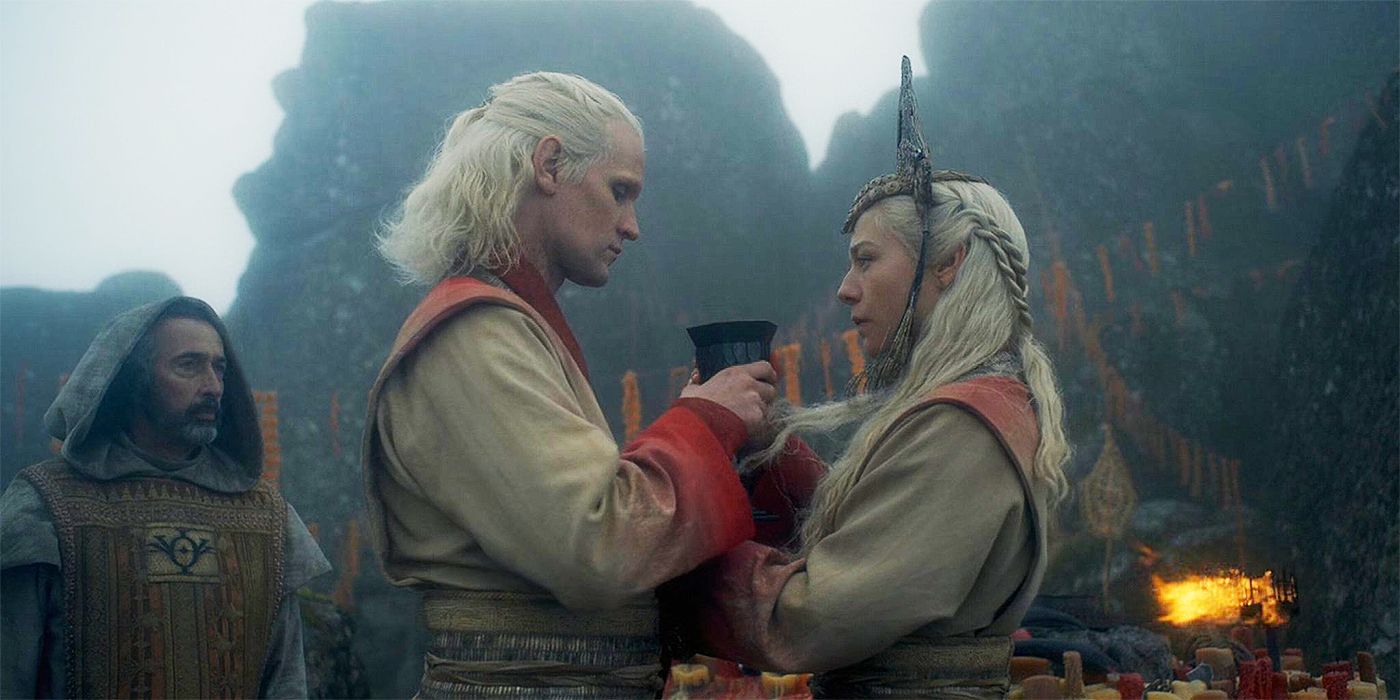The Big Picture
- Game of Thrones has many religions in Westeros, including the Faith of the Seven, the Old Gods of the Forest, the Drowned God, the Lord of Light, the Many-Faced God, and the Old Gods of Valyria.
- Each religion has its own unique beliefs, rituals, and followers, contributing to the diverse cultures in the series.
- Some, like the Lord of Light, reject all other religions, while others are capable of coexisting peacefully.
It’s common for characters in Game of Thrones to refer to “the Old Gods and the new,” but that is only the tip of the iceberg when it comes to the religions that populate Westeros. The expansive fantasy world includes many more gods, each with dedicated followers. There are a wide variety of gods respected by different peoples. While most of Westeros follows the Faith of the Seven, there are many deities throughout the kingdom. Others include the Old Gods of the Forest, the Drowned God, the Lord of Light, the Many-Faced God, and the Old Gods of Valyria.
The religious variation highlights the different histories mixing as each presents a different culture in a localized set of followers. The different religions interact, some more tolerant than others, but most have fervent servants. The show explores certain religions more than others. After all, it’s impossible to separate the Lord of Light from Stannis Baratheon’s (Stephen Dillane) story, while the Drowned God plays a more minor role in the Iron Islands plot. Yet, each religion gives insight into this world and its followers.
Game Of Thrones
Nine noble families fight for control over the lands of Westeros, while an ancient enemy returns after being dormant for a millennia.
- Release Date
- April 17, 2011
- Creator
- David Benioff, D.B. Weiss
- Seasons
- 8
- Studio
- HBO
The Faith of the Seven
The dominant religion in Westeros is the Faith of the Seven, also sometimes known as the New Gods. This honors seven aspects of the same god, though they are often referenced separately. The Father is one of the favored aspects, representing divine justice and judgment. The Mother stands for mercy, peace, and fertility. The Warrior receives prayers for strength and courage, especially regarding battle. The Maiden represents innocence, purity, love, and beauty. The Smith is sacred to craftsmen. The Crone is revered for her wisdom and foresight. The most rarely honored aspect is the Stranger, who represents the unknown and death. The symbol for the Seven is a seven-pointed star, which is common in the Septs, where they are worshipped.
The religious leader is the High Septon, but there are many Septons and Septas below him with some authority. Septons preside over marriages and other ceremonies, while Septas are often responsible for caring for the daughters of Lords. Both take vows of celibacy for their position. Another order dedicated to the Faith of the Seven is the Silent Sisters, who serve the Stranger in particular. This all-female order is responsible for performing funeral rites and tending to the dead after battles. They take vows of silence that give them their name. Though it did not originate in Westeros, the Faith has been present on the continent for thousands of years. The Seven can be traced back to the Andals, who brought the religion with them when they invaded Westeros and conquered the First Men.
Since then, the Faith has dominated Westeros, imposing its social rules, even on the leaders. The Faith took issues with Aegon the Conqueror and his marriage practices, namely that he had two wives and that they were also his sisters. The Targaryen made peace with the Faith, adopting a doctrine of exceptionalism that allowed their incest, but they avoided marrying multiple women again, except for Maegor the Cruel. Though accepting it as the primary religion, the Targaryens removed some of the Faith’s power, ending the High Septon’s ability to charge Kings and disbanding the Faith Militant Army until Cersei (Lena Headey) reinstates it in Game of Thrones. Though many follow the Faith of the Seven, the High Sparrow (Jonathan Pryce) and his zealots are a more devoted and brutal group of followers.
The Old Gods of the Forest
The Old Gods are the second most common religion in Westeros. Those who follow the Old Gods most prominently include the Starks and the Wildlings, along with many northerners. This was the religion of the First Men, passed down to them by the Children of the Forest. Once widespread, the followers of the Old Gods declined with the Andal conquering, but in the North, where the Andal invaders were stopped, it is still common. The Old Gods are even more revered beyond the Wall, where they are the only gods recognized by the Wildlings. Though there are still old tensions, followers of the Faith of the Seven and those of the Old Gods can coexist because the Old Gods and New Gods are offended by many of the same things.
The religion is less organized than others, with no holy texts, lavish ceremonies, and few strict rules. The religion focuses on the Heart Trees found in the Godswoods. These ancient and unique trees have faces of the gods carved into them for supplicants to pray to. The only common ceremony is a marriage, where a bride prays to the Weirwood trees for the gods’ blessing. The Old Gods are tied to nature, and the Wildlings, in particular, believe they can be heard in the winds and see through the eyes of the Weirwood trees, like Bran’s (Isaac Hempstead Wright) ability as the Three-Eyed Raven. The Old Gods are tied to the Weirwood trees, giving them more power in the North, where all are still standing, unlike in the southern regions of Westeros, where many were destroyed.
The Drowned God
The Drowned God is served only by the Ironborn of the Iron Islands. The Drowned God requires violence from his followers, demanding the “Iron Price” and deeming raiding and killing enemies an act of piety. The lore of this religion is more concrete than others, as it details a struggle between the Drowned God and his eternal enemy, the Storm God. The Drowned God lives beneath the ocean, where the godly Ironborn who die at sea are honored after death. In contrast, the Storm God is believed to live in a castle in the sky as he attempts to destroy Ironborn ships with storms.
The Ironborn do not have statues like the Faith of the Seven or even faces in Heart Trees like the Old Gods, but they worship their god in other ways. The Drowned God is represented by salt water, and many ceremonies require people to be anointed with water from the ocean. Some such ceremonies require people to be held underwater until they stop breathing and drown themselves. Those who survive are said to become harder and stronger, going along with their repeated phrase, “What is dead may never die.” Drowning is a way of proving piety, especially for the priests, but it is also a way of execution. Religion is integrated into every aspect of Ironborn culture, from its practices of violence to rampant sexism, making the Drowned God one of the most influential deities, if not a common one.
The Lord of Light
The Drowned God is not the only bloodthirsty deity worshiped in Westeros. Though the Lord of Light is more commonly worshipped in Essos, there are followers in Westeros. Most memorably, the Red Priestess, Melisandre (Carice van Houten), converts Stannis Baratheon’s followers to the Lord of Light by proclaiming Stannis the rightful king and the fulfillment of prophecy. Yet Melisandre isn’t the only follower of the Lord of Light in the series. Thoros of Myr (Paul Kaye) is a Red Priest who performs much of the same magic as Melisandre in the Lord of Light’s name. This religion is relatively new to Westeros. Although Thoros is in King’s Landing before Robert Baratheon’s death, there is only an organized following of the Lord of Light after Stannis adopts the religion, putting the Lord of Light’s firey heart on her banner.
Known as R’hllor, the Lord of Light is a fire god, representing goodness, heat, light, and life. R’hllor and his followers are locked in a constant struggle against the darkness and the deity known as the Great Other, represented by cold and death. The followers of the Light strongly believe in only two gods, rejecting all other religions and refusing to coexist as the others do, insisting that other gods are demons and false idols that must be destroyed. Melisandre implies that the White Walkers are agents of the Great Other. While the White Walkers fit the description of an evil being represented by cold and death, it is unclear if that is an established part of the religion or her fitting her experiences into her worldview. The Red Priests and Priestesses are known to perform magic, most notably resurrection. Melesandre raises Jon Snow (Kit Harington) from the dead, and Thoros revives Beric Dondarrion (Richard Dormer) several times. Melisandre performs other magic throughout her time on the show, including having visions in flames and birthing a shadow monster. Yet the Lord of Light requires sacrifices. Melisandre performs blood sacrifice, burning people alive in a ceremony dedicated to R’hllor.
The Many-Faced God
Like R’hllor, the Many-Faced God is more commonly worshiped in Essos, but some followers have made it to Westeros. Jaqen H’ghar (Tom Wlaschiha) is the first to introduce the Many-Faced God, and Arya Stark (Maisie Williams) follows him in the later seasons. Though his temple is in Braavos, the Many-Faced God is an odd case because the religion acknowledges other gods as one of the faces. The Stranger of the Faith of the Seven, the Weirwood Trees of the Old Gods, the form of the Drowned God, and even the Lord of Light are all believed to be faces of the Many-Faced God, so by that logic, he is worshipped throughout all Westeros.
The Many-Face God’s followers are the Faceless Men, trained as assassins in the House of Black and White. With the Many-Faced God being a god of death, it makes sense that his followers kill, but not ruthlessly. The Faceless Men see death as a gift from their god, as it marks the end of suffering. They offer access to a peaceful death to those who are suffering, physically or emotionally. They can also gift death to people who are harming others, but they do not kill for personal revenge but for others whom they have agreed to serve. Like their god, the Faceless Men can change faces, helping their work remain a secret. There are no known ceremonies performed for the Many-Faced God, but the words “Valar morghulis,” meaning all men must die, are always reciprocated with “Valar dohaeris,” meaning all men must serve. This is the closest thing to a ceremony seen in Game of Thrones.
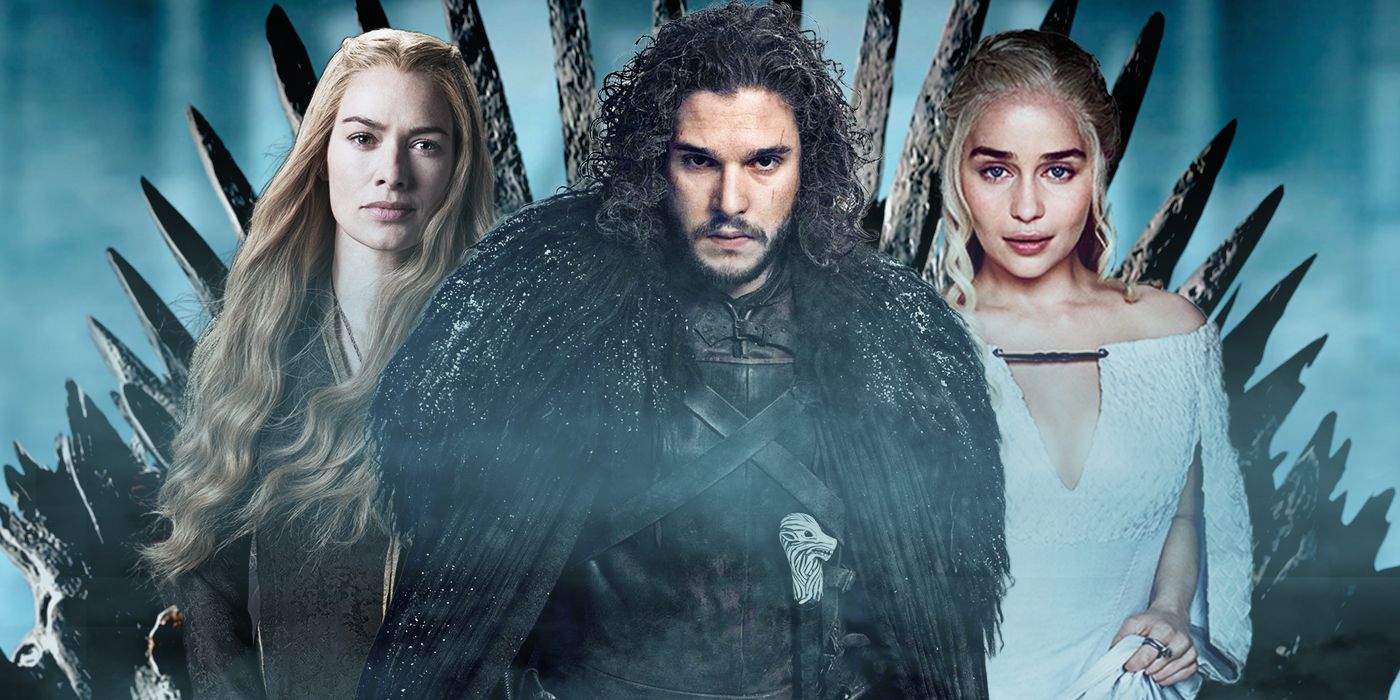
This Is the One Line That Defines ‘Game of Thrones’
Ned Stark may not heed this warning, but it rings true throughout the series.
The Old Gods of Valyria
The final religion recognized in Westeros is not seen in Game of Thrones but appears in House of the Dragon. The Old Gods of Valyria were worshipped before the Doom of Valyria. Though their country of origin is gone, the religion survived through the Targaryens. The surviving Valyrian colonies have other gods because Old Valyria was known to be tolerant of other religions, a fact reflected in the Targaryens accepting the other faiths in Westeros after the conquering. However, as the surviving dragonlords, some Taragyens continued to honor the ways of the Old Gods of Valyria. House of the Dragon shows a Valyrian wedding ceremony between Rhaenyra (Emma D’Arcy) and Daemon (Matt Smith), where the bride and groom cut their hands and lips with dragon glass and mix their blood. This is one of the few surviving elements of the religion to appear on-screen.
Though little is known about the Old Gods of Valyria, there is another hint that the Targaryens still recognize their ancestor’s religion despite publicly claiming to follow the Faith of the Seven. This hint can be found in the names of their dragons. The Old Gods of Valyria’s pantheon includes Balerion, Meraxes, Syrax, and Vhagar, whom the Targaryen dragons are named after. Though not nearly as common as the others, the Targaryens prove there are traces of the Old Gods of Valyria in Westeros.
Game of Thrones is available to stream on Max in the U.S.
WATCH ON MAX


